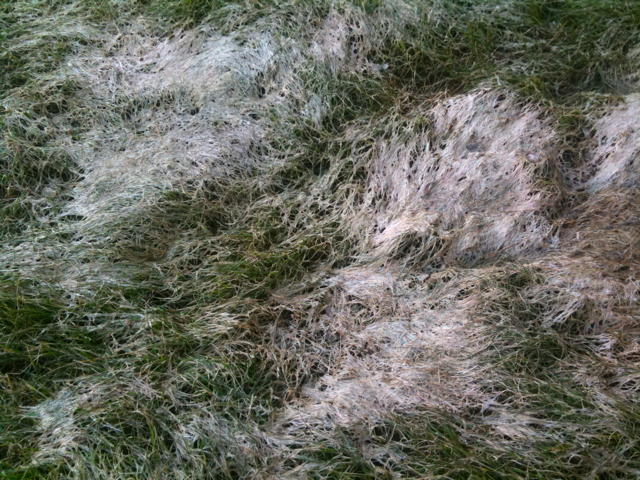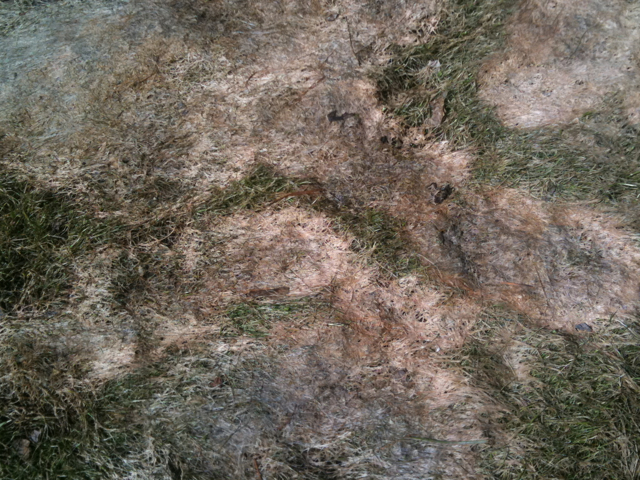Snow Mold: What Strange Bedfellow Is This?
A property I recently visited surprised me. It had snow mold. I have to admit I was expecting it, just not at this level. It was after all, actively growing sod that had been installed just before the onset of winter.
Not having seen it at this level before I doubted—only for a moment—my prognosis. Thankfully, UMass Extension Plant Pathologist M. Bess Dicklow confirmed my finding. It does appear to be a bad case of Gray Snow Mold (Typhula spp.) with a little bit of Pink Snow Mold (Microdochium nivale) thrown in for good measure.

Late season applications of Nitrogen and prolonged snow cover are catalysts for snow molds.

Lawns infected by snow molds collapse and become matted.
The Plan
As soon as possible the infected areas will be raked out. Grass that does not re-grow will be re-seeded immediately. Then, it is time to verify pH and soil fertility requirements with a soil test. Monitoring will be constant throughout the summer, even though snow molds are usually dormant. If present, signs of the disease will manifest itself throughout the growing season. Next fall, extra effort will have to be made to be sure debris is kept off the grass so we do not give the pathogens extra opportunity to become active.
As this is a new landscape, adjustments will be needed for the soil to support turf (yes, this is a situation where grass gets precedence over local ecology). Therefore, a custom blend of soil amendments will be prepared according to soil test results and site requirements, and then applied at appropriate times.
Although snow molds are present, using these simple cultural controls will reduce its impact on this lawn and landscape.
